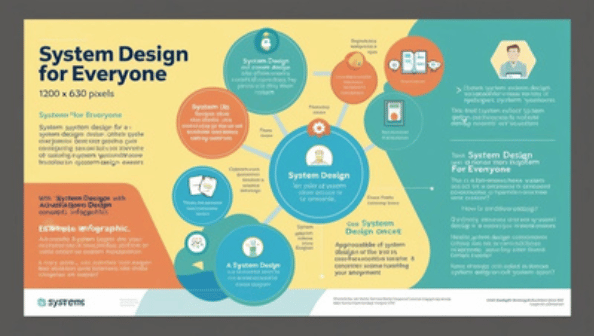System Design for Beginners with Real-Time Examples
 Khalifa Shaik
Khalifa Shaik
System Design Explained Like You're 5 (But Smarter!)
Hey there! 👋
Are you someone who's heard the term "System Design" but feels like it's a mystical beast only interviewers and senior devs understand?
Don’t worry—I’ve got your back!
Let’s break it down like a story, with real-life examples and zero jargon (well, almost 😄).
💡 What is System Design?
System Design is like planning before building. Imagine you’re setting up a new coffee shop ☕. You need to decide:
How many tables to keep?
Where to place the kitchen?
How to handle online orders?
Should you open more outlets in the future?
That’s System Design—planning how a system (your shop or app) will work efficiently, handle traffic (people or users), and grow in the future.
🛠️ Real-Time Example: Designing Instagram 📸
Let’s say you want to build a mini Instagram. What do you need to think about?
1. Users
Can they sign up/login?
Should they have followers/following?
2. Posts
Where do you store the photos?
How do you show the latest posts?
3. Likes & Comments
What happens when millions like at once?
Can people comment in real-time?
4. Notifications
- How do you inform someone instantly when they get a like?
Each of these is a component in your system. You design how they connect and communicate with each other.
🔧 Key Concepts in a Fun Way
Here are some key terms you might hear, explained simply:
| 💬 Term | ☕ Coffee Shop Analogy |
| Client | The customer visiting the shop |
| Server | The person taking your order |
| Database | Your storage room with recipes & inventory |
| Load Balancer | A staff member redirecting customers to the right counter |
| Cache | A ready-made coffee for repeat orders |
| Scalability | Expanding the shop when too many customers arrive |
| Latency | The time between ordering and receiving your coffee |
| API | The menu card that tells you what you can order |
🌍 Real Life Analogy: Swiggy or Zomato 🍔
When you open Swiggy:
You log in → Authentication system
You see restaurants → Backend fetches from a database
You place an order → APIs connect you to the restaurant
You get updates → Real-time notifications
Your food arrives → Delivery system design
All these steps are handled by a designed system behind the scenes—designed to be fast, scalable, and reliable.
👶 Start Small, Think Big
Don’t worry if you don’t get it all at once. System Design is like cooking:
You learn to boil water first ☝️
Then try making noodles 🍜
One day, you're hosting a dinner party (big apps!)
🚀 Want to Learn More?
Here’s a small roadmap to start learning system design step-by-step:
Learn the Basics – Client-Server Model, REST APIs, Databases
Understand Scalability – Load Balancing, Caching, Horizontal/Vertical Scaling
Dive Into Storage – SQL vs NoSQL, Blob Storage (for images/videos)
Read Real Systems – How Netflix, WhatsApp, Uber are built
Practice Designing – Try designing YouTube, Twitter, Chat apps
🫱 Let’s Keep It Human
Remember, system design isn’t about throwing big words. It’s about solving real problems thoughtfully.
If you enjoyed this post, leave a 💙, share with a friend who's confused about system design, and follow me for more humanized tech explanations!
Got questions? Drop them in the comments! 💬
Let’s grow together. 🌱
Subscribe to my newsletter
Read articles from Khalifa Shaik directly inside your inbox. Subscribe to the newsletter, and don't miss out.
Written by
